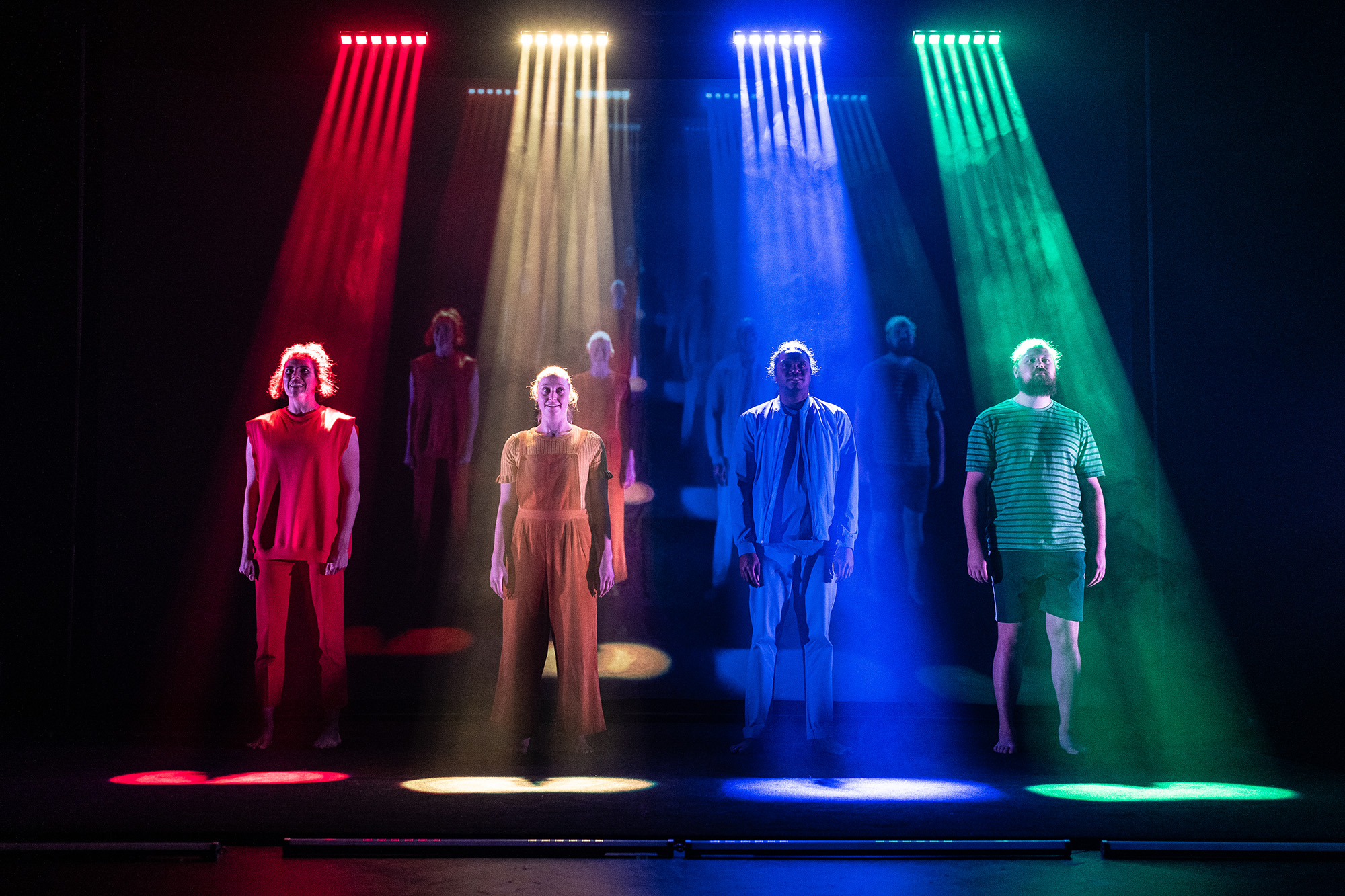ACTIVITY – Create an atmosphere through sound.
In groups, come up with 2 minutes of sound effects and music to make an audience feel something – sadness, fear, joy, wonder, suspense. Children can use their voices, bodies, instruments or technology. Each group then ‘performs’ the atmosphere. To do this, the performers sit in a circle with the others (the listeners) in the centre of the circle. The listeners close their eyes and listen as the performers share their atmosphere. After the performance ask the listeners how they felt. Was this what the performers were intending?
ACTIVITY – Create mood and atmosphere through light and colour
Ask children to choose a feeling they’d like their classmates to feel and to make a tableaux representing this feeling, with one or two people. Using some torches and coloured cellophane, children can choose cellophane colours that suit this tableaux and stick this to their torches. Turn the room lights off while children shine their coloured torches onto the tableaux. Can children talk about how this tableaux made them feel?
GAME – Become performers and create moods!
In a circle, each child steps forward and says a character name with a wave, followed by a feeling and a gesture, such as “I’m Sandy (wave hello) and I am SAD (cry and rub eyes)”. Children all respond with “You’re Sandy (wave hello) and you’re SAD (cry and rub eyes)”. Encourage children to explore a whole range of moods, copy the gesture as precisely as possibly, and to set up the mood so that it is clear and maybe exaggerated. Try other moods – happy, excited, angry, hungry, confused, anxious, tired, jolly, nervous, calm and so on. You could also ask children what the opposite moods would be e.g.: “Sandy is sad, what is the opposite of sad?” Once the opposite mood is found ask a child to perform it.

